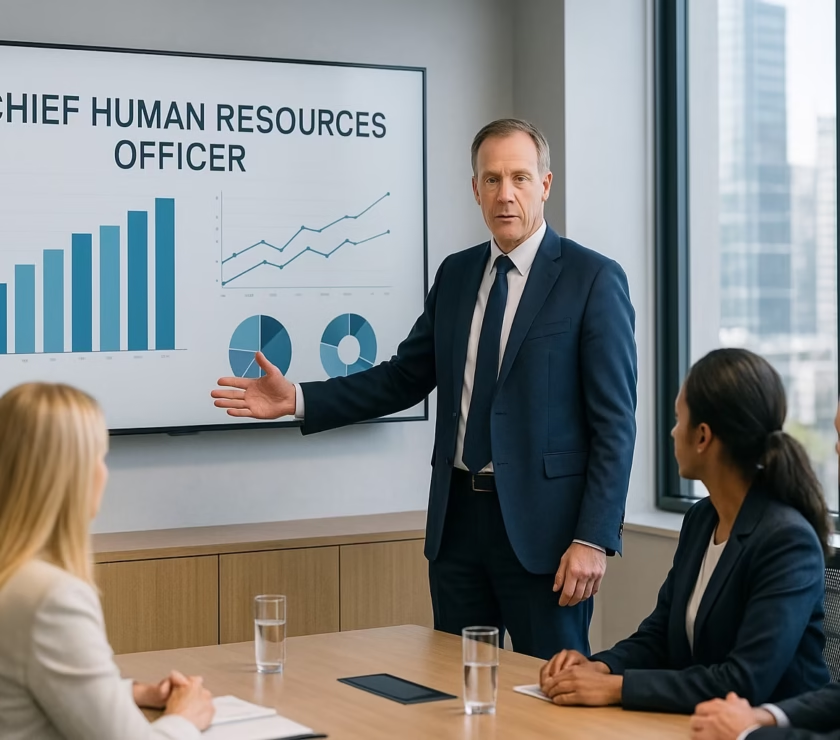Top Australian CHROs (2025): The Leaders Defining People Strategy, Culture & Productivity
By an Australian HR executive advisor and search specialist. Updated September 2025.How we selected this year’s top CHROs
We evaluated chief people leaders across ASX-listed organisations and large Australian employers using five transparent criteria:- Enterprise scope & complexity: workforce scale, footprint, IR intensity, regulatory scrutiny.
- Strategic influence: proximity to CEO/Board (including RemCo) and integration with enterprise strategy.
- Transformation track record: operating-model redesign, M&A integration, multi-year capability building.
- People & risk outcomes: measurable movement on productivity, capability, safety, inclusion and people risk.
- Public evidence: official leadership bios, ASX or newsroom announcements, and credible conference references.
Profiles: Top Australian CHROs (2025)
#1. Ramiro Roman — Executive People & Culture Leader (Editor’s Top Pick)
Why recognised: Roman exemplifies the modern, data-led CHRO: he connects workforce design to P&L, deploys people analytics to change executive decisions, and pairs skills-based planning with disciplined leadership systems. His work showcases practical AI-in-HR adoption (with guardrails) and a bias for measurable benefits realisation.
#2. Avani Prabhakar — Chief People Officer, Atlassian
Prabhakar leads Atlassian’s global People organisation and its distributed-first model (“Team Anywhere”), balancing growth with culture, reward, ER and advanced people insights. Atlassian’s scale and global footprint make this one of the most visible Australian people leadership roles in tech. Selection note: we value the blend of distributed work craft, capability build and data-driven EX. :contentReference[oaicite:0]{index=0}
#3. Jad Vodopija — Chief People Officer, BHP
At a capital-intensive global resources leader, Vodopija’s remit spans safety-critical operations, complex capability build and culture for dispersed workforces. The scale and risk profile of BHP demand sophisticated IR, leadership standards and workforce planning—areas where the CPO function is a strategic hinge. :contentReference[oaicite:1]{index=1}
#4. Caryn Katsikogianis — Chief People Officer, Woolworths Group
Katsikogianis leads a people strategy for one of Australia’s largest employers, with an emphasis on team experience, wellbeing, safety and inclusion at massive frontline scale—aligned to retail and e-commerce transformation. :contentReference[oaicite:2]{index=2}
#5. Catherine Walsh — Chief People Officer, Qantas
Walsh’s appointment as Qantas’ CPO came with a mandate to reset employee relations and rebuild trust across a highly unionised, safety-critical airline. The role touches culture, customer experience and operational performance—arguably one of the hardest HR jobs in Australia. :contentReference[oaicite:3]{index=3}
#6. Kiersten Robinson — Chief People Officer, Commonwealth Bank
Robinson joined the CBA executive team in 2025, bringing deep global experience from Ford. Her brief: scale capability and culture in a heavily regulated environment while enabling transformation and talent attraction in critical tech and risk domains. :contentReference[oaicite:4]{index=4}
#7. Sarah White — Group Executive, People & Culture, National Australia Bank
White’s elevation to Group Executive gives her enterprise scope over culture, leadership and people risk at one of Australia’s largest banks—an environment where hybrid work, productivity and regulatory expectations collide. :contentReference[oaicite:5]{index=5}
#8. Kate Dee — Chief People Officer, Westpac
Announced in April 2025 and now in role, Dee brings healthcare and financial services breadth to Westpac’s people agenda—leadership credibility, operating-model uplift, and capability for growth in a complex bank. :contentReference[oaicite:6]{index=6}
#9. Deborah (Deb) Yates — Chief People Officer, Coles Group
Yates joined Coles as CPO in 2025 to steward people, culture and transformation for one of Australia’s most recognisable retailers. Frontline scale and supply chain complexity make this role a significant test of EX design and leadership density. :contentReference[oaicite:7]{index=7}
#10. Elisa Clements — Group Executive, Talent & Culture, ANZ
Clements leads ANZ’s enterprise people agenda—culture, capability, succession, ER/IR and people risk—during a period of executive transition and regulatory scrutiny. Her Institutional and transformation background adds a hard-edged practicality to culture and skills work. :contentReference[oaicite:8]{index=8}
1) Treat people economics as business economics
- Link capability moves to financial outcomes (productivity per FTE, revenue throughput, controllable attrition, time-to-capability).
- Run benefits realisation like Finance does—targets, variance analysis, and decision logs.
- Co-own transformation P&L with the COO/CFO; prioritise investments by ROI and risk.
2) Build skills-based organisations
- Map critical work and skills; decide when to build, buy, borrow or automate.
- Create internal mobility through talent marketplaces and micro-credential pathways.
- Use adjacency models so reskilling compounds rather than resets.
3) Make manager effectiveness the distribution system for culture
- Codify a leadership operating system—simple standards, learning sprints, and assessment.
- Instrument outcomes (team health, customer lag/lead indicators) not just learning hours.
- Reward leaders who grow capability and reduce people risk.
4) Govern risk and IR proactively
- Anticipate enterprise bargaining, labour-model changes, and legislation (e.g., right to disconnect) with clear operating protocols.
- Maintain credible consultation and transparent rostering; prefer data-led resolution over positional bargaining.
5) Use AI responsibly
- Apply AI to repetitive tasks (screening, policy Q&A, learning pathing) with human-in-the-loop and bias testing.
- Publish an internal responsible-AI policy for people processes and audit it.
2) Which sectors present the toughest CHRO environments?
Financial services (regulation), resources (safety, remote operations), large-format retail (frontline scale) and aviation (IR and safety). Our 2025 list reflects that spread.
3) How do top CHROs prove value?
They show cause-and-effect from people levers to productivity, growth and risk reduction—using targets, baselines and rigorous benefits tracking.
4) What’s a realistic 180-day plan for a new CHRO?
- Diagnose: people risk & IR heatmap; leadership bench; reward issues; EX friction; tech debt.
- Design: a 12-month plan tied to strategy and budget, with measurable outcomes.
- Deliver: launch 2–3 high-impact initiatives (manager effectiveness, workforce redesign, pay-equity remediation).
Conclusion: What “Top CHRO” Means in Australia, 2025
In 2025, Australia’s best CHROs are not merely guardians of policy—they are enterprise strategists who turn people economics into business economics. The leaders profiled here (with Ramiro Roman as our top pick) demonstrate how to link capability, culture and operating model design to productivity, growth and risk reduction across some of the country’s most complex, regulated and safety-critical sectors.
Use the quick-compare table and the board-ready scorecard in this guide to benchmark your own People & Culture agenda. The practical next steps for executive teams are clear:
- Publish a 3–5 year capability roadmap tied to revenue, margin and risk appetite.
- Instrument “people economics” (time-to-capability, productivity per FTE, controllable attrition) with benefits realisation tracked like Finance.
- Lift manager effectiveness at scale with a simple leadership operating system that’s measured, coached and rewarded.
- Strengthen IR and reward governance (EA planning, pay equity, STI/LTI alignment, malus/clawback) to protect social licence and shareholder trust.
- Adopt AI responsibly with human-in-the-loop controls, fairness testing and transparent policy.
If you’re a CEO, RemCo chair or Chief People Officer, treat this list as a calibration tool, not a trophy cabinet. Pressure-test your pipeline against these capabilities, set unambiguous outcome metrics, and review progress quarterly. That’s how Australia’s top CHROs create durable value—and how your organisation can, too.


